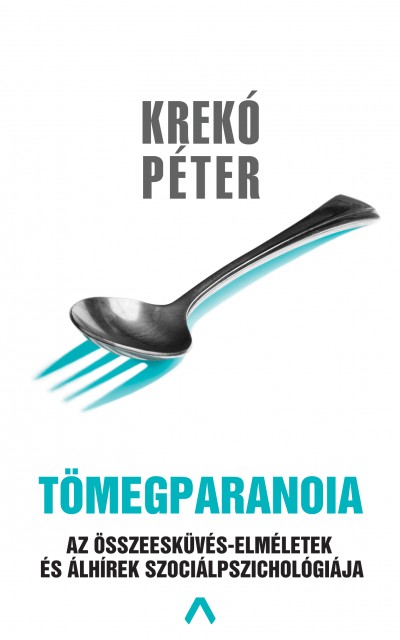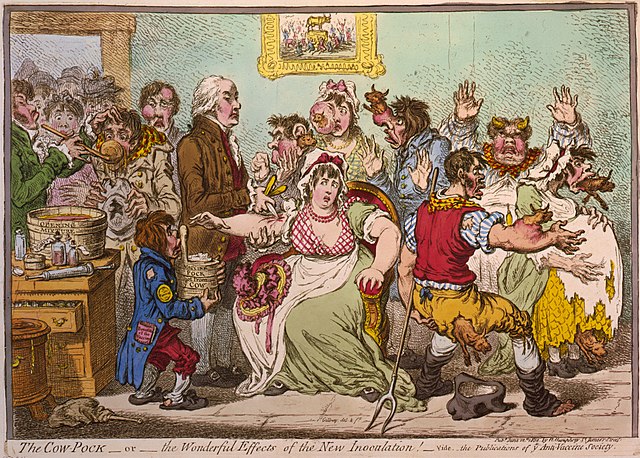In times of economic, political and social crisis, the temptation to fall back on conspiracy theories to rationalize the unexpected is especially high. I would suggest three underlying reasons for this: a sense of losing control, the information and knowledge vacuum, and anxiety triggered by negative events. When people feel they cannot influence happenings that pose a threat to their daily lives, they may try to recreate an illusion of control by overzealously seeking explanations.
Extraordinary events require extraordinary interpretations that reach beyond traditional and official narratives. Further, in historical times riddled with frustration and uncertainty, the need to identify an enemy or culprit can be overwhelming. Conspiracy theories provide an outlet for aggressive leanings and point to specific foes in ways that seem to explain abstract, impersonal problems or complex social processes, which can otherwise appear impossible to understand. The ‘infodemic’ following the coronavirus pandemic provides a textbook case for all these tendencies.
Information vacuum
According to some benevolent interpretations, rumour and its distinct subtype, the conspiracy theory, both function as collective problem-solving mechanisms and contribute to a process of social adjustment. Rumours surface when a previous world order is turned on its head and former reference points lose their validity or cogency, triggering new collective explanations. Sudden unexpected events, with a powerful social impact that demands rationalization, tend particularly to trigger conspiracy theory narratives. An individual arguing on the basis of these stories need not be personally affected by the event in question.
 This essay is based on the author’s book Tömegparanoia (Mass paranoia: The social psychology of conspiracy theories and fake news; Athaeneum, 2018, second edition 2020). Artwork © Athenaeum.
This essay is based on the author’s book Tömegparanoia (Mass paranoia: The social psychology of conspiracy theories and fake news; Athaeneum, 2018, second edition 2020). Artwork © Athenaeum.
The cognitive psychologist Leon Festinger has observed that, after an earthquake, scaremongering visions of an apocalyptic future often spread in communities not directly affected by the disaster, as people will look to justify strong unfounded anxieties.
The more tragic the event and the deeper its impact, the more we suspect an underlying conspiracy. We feel the need to establish a symmetry between the significance of an event and the gravity of its cause: extraordinary events must be precipitated by extraordinary conspiracies. An experimental research project conducted in the 1970s showed that a successful assassination attempt on a US president was far more likely to give rise to an American conspiracy theory than an unsuccessful one. The authors argued that this was because a conspiracy to kill was more likely to succeed than an assassination attempt conducted by a lone wolf.
Plunging economy
In times of economic crisis, conspiracy theories flourish. An economic crisis is a complex, unpredictable process, with a logic that experts have not yet fully grasped. Crises such as this set in unexpectedly and affect an extraordinary number of lives. Explanations and available analyses are contradictory, the information environment is heavily ambiguous, and public opinion turns to simplistic explanations in consequence. People end up naming names.
Furthermore, ‘official’ explanations can be psychologically uncomfortable. They generally identify abstract, systemic problems, and fail to satisfy the public’s craving to see those responsible for the crisis identified and punished. Economic setbacks limit resources, and competition for what is left exacerbates conflicts between social groups and their mutual prejudice. This struggle can come to be expressed in conspiracy theories.
Fake news and narratives about sinister and powerful groups typically multiply after terrorist attacks or major accidents which impact the community as a whole. Events like 9/11 or the 7/7 London bombings, the death of Princess Diana or the murder of Osama bin Laden, all spawned widespread conspiracy theories. The behaviour of political elites can also be responsible for the spread of these narratives, especially when surfacing scandals reveal the machinations of the powerful. The Watergate scandal, which exposed a very real and major political cover-up, may have contributed substantially to the pervasiveness of conspiracy theories in the United States today.

A photograph of the cockpit voice recorder from American Airlines Flight 77, as used in an exhibit at the Moussaoui trial. Photo via Wikimedia Commons /
US government during 9/11 investigation / Public domain.
Stories against science
The real significance of fake news, and narratives that invoke conspiracies, lies less in the stories themselves than in their social impact. Conspiracy theories are tales expressing absolute mistrust of established authority and power. All institutions and individuals associated with the ‘system’ are suspects: politicians, media, experts, scientists, healthcare institutions, pharmaceutical companies and doctors. In recent years, anti-science conspiracy theories have multiplied at an astonishing rate, posing a considerable challenge to scientists and decision-makers.
Conspiracy theories about healthcare can be particularly dangerous. They endanger those who believe them, their families and the broader social environment.
The coronavirus resulted in a bizarre ambivalent response when it comes to the trust in science and scientists. While scientists are often mentioned as the most reliable source of COVID-related information, we could see a cascade of anti-scientific conspiracy theories and fake news at the same time. Sometimes in a really bizarre manner.
Many expected, for example, that the coronavirus will take away all the credibility of the anti-vaccination movements. But just the very opposite happened: the pandemic gave momentum to anti-vaxxers – a community that is small in size but extremely effective in outreach and communications. They took the opportunity to spread their message, capitalizing on the lack of vaccines in such a crucial moment. And these messages have their impact on the broader society as well. Two fifths of Chechs and Slovaks, for example, say that they would reject vaccinating themselves, even if the vaccines were available.
Research has also shown that about a quarter of African Americans believe that the HIV virus was released into the population as part of a conspiracy to eradicate black people. This belief contributed to a significant reluctance among many black men to use condoms or see a doctor to help prevent or treat HIV/AIDS. Doctors, they felt, could be part of the conspiracy. The risk of HIV infection in their community was thereby greatly increased.
A spreading narrative that birth control is part of a genocidal conspiracy against black Americans also led to a setback in efforts to encourage condom use. It contributed to a spike in unwanted pregnancies and the spread of sexually transmitted diseases. Other stories that may appear less damaging, such as those offering ways of losing weight, have also provoked irrational behaviour and responses. In Brooklyn African American circles, for example, rumours were spread that sodas and fast food produced by certain chains (Snapple and Church’s Chicken) contain added chemicals that sterilize black men.
The belief among African Americans that vaccines may be potential weapons of genocide was obviously greatly amplified, by acute experiences of very real racial injustice and subjugation. Their distrust must be considered alongside the history of black oppression in the US and unethical research programs, like the Tuskegee Syphilis Study between the 1930s and the 1970s, in which black American men were subjected to human experimentation and mistreatment Ultimately though, faith in conspiracy narratives ends up harming the believers, regardless of their historical memory.
Anti-vaccinationist attitudes reach far beyond the boundaries of the black community. The anti-vaxx movement has spread worldwide and hundreds of thousands have fallen victim to its prejudices.
Anti-vaxxers gaining momentum
Anti-vaccination is one of the deadliest forms of the ‘infodemia’. To take a more retrospective look: in 2004, for example, CBS News reported that one unvaccinated child had infected 19 other children and two adults with measles. The disease spread largely because nine of the infected children had not been vaccinated with the combined antibody vaccine against measles, mumps and rubella (MMR), for fear that this vaccine might cause autism. This was despite widely reported evidence that the MMR anxieties were based on by a well-publicized but baseless misconception. Defying common sense costs lives.
According to data produced by the World Health Organisation, measles remains one of the leading causes of child death globally. This is true despite the existence of the MMR vaccine, widely used in Europe, which protects against measles, mumps and rubella. The inoculation is affordable and accessible to everyone. Nonetheless, in 2016 there were 89,780 fatal measles infections worldwide and, in 2015, 367 people died of the disease every day. The good news is that, between 2000 and 2016, mandatory vaccination lowered the number of cases with a fatal outcome by 84%, saving over twenty-million lives. But in the same period, several million people died because they were not vaccinated.
However, because of adverse publicity from the anti-vaccination movement, which declared MMR its arch enemy, measles has returned to countries where it had previously been eradicated: Germany and the United States, for instance. According to a project which provides lists of vaccine hesitancy victims based on public reports, failure to vaccinate caused 9028 deaths between 2007 and mid-2015 in the US alone.
In 2017, measles re-surfaced repeatedly in Europe, most of all in Germany, Italy, France and Romania. According to a study of several European countries, there is a widespread belief that the negative and harmful effects of vaccines outweigh their advantages. In Hungary the anti-measles vaccine was introduced in 1969, so here the population is relatively well protected. After the emergence and proliferation of anti-vaxx views over the border in Romania, however, the disease resurfaced in Hungary as well.
Suspicions of health care
Misconceptions and conspiracy theories play a demonstrable role in spreading disease. They claim not only that vaccines cause autism, but that government-funded scientists and experts are seeking to cover it up. In the aforementioned CBS News report, a Minnesota paediatrician explained the reasons behind the rate of infection in his locality as follows: ‘The first virus to spread was disinformation. The second, measles.’
Thanks to recent research, we know increasingly more about how anti-vaccination movements operate, what arguments they present, and the kind of healthcare conspiracy theories they promote. Misconceptions about healthcare are astonishingly widespread. According to the results of one US study, almost half of Americans believe in at least one medical conspiracy theory. Those who do so are also more likely to seek recourse from ‘alternative therapies’ which may have little or no effect and may prove harmful if the patient skips conventional medical therapy. Rather than turning to health experts and doctors, this group will be inclined to take advice from people they trust – usually family members, friends, or acquaintances with no corresponding qualifications.

British satirist James Gillray was inspired by the controversy over the cowpox vaccine in 1802. Opponents of vaccination had depicted cases of vaccinees developing bovine features. Image from the US Library of Congress via Wikipedia.
Medical conspiracy theories also often correlate with anxieties about the impact of technological change on human health — most typical of the elderly, religious believers and right-wingers. An analysis of anti-vaccination tweets in the US between 2009 and 2015, has shown that the number of tweets was greater in states with a higher proportion of women who had recently given birth, of people aged between 40 and 44, of men with no higher education, or of households with a higher income. As these results indicate, the anti-vaccination movement can gain popularity among very different groups at the same time: young mothers, men with little education and people with high earnings. In the US, anti-vaxx tweets are not by any means the most popular in economically less developed states, as might be expected.
Anti-vaccination beliefs, medical conspiracy theories and faith in alternative medicine all appear to correlate with political conspiracy theories. According to a study based on data from numerous countries, those who believe in conspiracy theories about the Kennedy-assassination, Princess Diana’s death or 9/11 tend to be more sceptical about vaccines. The role of misconceptions in dismissing the H1N1 Swine Flu vaccine (driven to some extent by political considerations) has been proven by Hungarian studies as well.
Preventing misbeliefs
Experiment-based research has shown that conspiracy theories can undermine faith in vaccines and diminish people’s inclination to get vaccinated. It also seems that such beliefs stay stubborn in the face of change. Prevention — based on promoting the logic of vaccination — is therefore more effective in the fight against anti-vax conspiracy theories than subsequent salvaging. Another investigation has shown that arguments against conspiracy theories were only effective when they were presented to subjects in advance of the conspiracy narrative itself. It is easier to immunize those who refuse to succumb to such theories generally, than to correct anti-vaccination attitudes that have already been formed.
Conspiracy narratives can provoke far more than anti-vaccine sentiment, however. One experiment has shown that conspiracy theories targeted at climate change sceptics substantially diminished people’s willingness to observe their carbon footprint or actively do something for the environment. The narratives promote a view that global warming is a mischievous invention aimed at weakening developed countries. They intensify public feelings of disappointment and insecurity, while strengthening the sense that the individual is helpless.
Justifying terror
On 22 July 2011, a thirty-two-year-old Norwegian man in police uniform arrived in Utoya, a small island near Oslo. With his favourite music playing in his earphones, he randomly slaughtered 69 young Norwegians in a youth camp run by the Workers Youth League, a group affiliated to the Norwegian Labour party. Two hours earlier he had detonated a van bomb in Oslo’s government quarter, killing eight people.
The assassin, Anders Behring Breivik, was convinced he had committed a heroic deed and that his victims deserved their fate. In an incoherent 500-page document, which was partly copy-pasted, he argued that ‘cultural Marxists’ — i.e. liberals and leftists — were colluding with leaders of Muslim countries to implement a ‘Eurabia project’, that is the Islamization of Europe. The fight against them, Breivik said, was not terrorism, but a holy mission to defend a white Christian Europe.
The terror organization ISIS has developed the inverse of this kind of ideology. They claim that the forces of the West (Jews and the Christians) are colluding with moderate political organizations and imams in Muslim countries, in an attempt to Christianize and westernize the Muslim world. The only real defence against this mission, the argument goes, is an Islamic caliphate, which must be fought for by radical means: through the ritualistic, ruthless and spectacular massacre of tens of thousands of people. Ideological justifications behind ISIS assassinations often quote the global and all-encompassing conspiracy of the United States and Israel.
Meanwhile, the perpetrator of the 1995 Oklahoma bombing, Timothy McVeigh committed his act of terror — which cost 168 lives — as a protest against the oppression of US citizens by central government.

Timothy McVeigh’s home-made fertilizer bomb killed 168 people and injured hundreds in Oklahoma City in 1995. Photo by usacetulsa from Flickr.
Strategy, not psychopathology
Acts of terrorism are founded on theories that legitimize violence to make it acceptable in the battle against nefarious authority and power. Conspiracy narratives play a key part in their ideological justification.
This holds true for other forms of political violence as well. Any extreme movement is likely to have a theory at its heart, formulated to justify antagonism against an outside group. The narrative functions as a radicalization multiplier. It can push the group’s thinking and behaviour in a more extreme direction and serve as a catalyst for large-scale acts of terror.
Leaders of extremist organisations use conspiracy theories as instruments of ideology and group dynamics to form and activate their base, and to consolidate the faction they control. The excellent social psychologist Arie Kruglanski claims that terrorism is a tool to achieve a desired political end, rather than a syndrome with identifiable characteristics and psychological traits. Strategy, rather than psychopathy, is behind it. This principle is equally applicable to conspiracy theories.
The four main elements of a radical conspiracist narrative are: dualism, scapegoating, demonization and extreme, apocalyptic aggression. Its storyline is based on a simple adage: ‘If I don’t destroy them, they will destroy me.’ Extreme groups use these four elements or ‘tools’ to create and mobilise their base. Their ideologies offer moral justification for the use of cruelty and brutality against outside groups by portraying violence as self-defence. For extremists conspiracy theories are an ideological axiom – an established truth requiring no rational examination. Any political ideas or goals simply follow from there.
Extremism, conspiracy and control
If extremist organisations use conspiracy theories as ‘tools’, so do radical ideologies. They cannot exist without stories, just as informal fanatic groups cannot exist without fantasies of enemies plotting in the background. Conspiracy narratives are predominantly associated with deprivation of power and control. In societies organized around democratic principles, the groups that fall back most on conspiracy theories are the ones which feel consistently oppressed and marginalized.
All around Europe, political forces of both the far left and the extreme right put conspiracy theories front and centre of their politics. The narratives often surface and spread among marginalized political factions, with little influence and consistently frustrated goals. The groups explain the obstructions they encounter by claiming they have been pushed aside by hostile conspiracies and the secret or illegal practices of socio-political institutions such as the media, political parties and parliament, the courts and the police. This, they argue, is why their impact on society remains insignificant despite that a majority of people, they allege, share their views.
Extreme ideologies and conspiracy narratives walk hand in hand: supporters of both the far-left and the radical right base their world views on these theories. In the 2010 general election in the UK, for example, president of the British National Party Nick Griffin turned the ‘global warming conspiracy’ into the central theme of his party’s campaign. He claimed that a group of scientists subsidized by the European Union had used fraudulent research as evidence to support their global warming theories, in order to destroy the British industry. The ‘global warming hoax’ was also Nick Griffin’s central theme as a member of the European Parliament.
In a similar fashion, the ultranationalist Greater Romania Party has promoted the notion that Nicolae Ceausescu’s overthrow was the result of a conspiracy between the United States, Russia and Hungary. Meanwhile, in Northern Europe, strongly anti-Muslim parties, such as the Dutch Freedom Party or the Swedish Democrats, claim that some Arabic countries are pursuing a colonization policy intended to influence political processes in Europe. It is alleged that the intention is to build an Arabic-European axis that will push for an Arab-friendly, anti-Israel agenda in government policies, so that, within a few decades, Europe should become Eurabia – a region dominated by ethnic Arabs.
The more radical and violent a political group is, the more deeply embedded their conspiracy narratives become. The intense solidarity of conspirators provokes counter-solidarity. They can effectively unify and activate their own group. Correspondingly, the story of conspiracy helps justify the marginalized position of the group, identifies the enemy and can legitimize fanatical and violent political acts. In the final analysis, the logic of extremism merges inseparably with the logic of conspiracy.
This essay is based on excerpts from the author’s 2018 book Tömegparanoia (Mass paranoia: The social psychology of conspiracy theories and fake news; Athaeneum, second edition 2020).

 This essay is based on the author’s book Tömegparanoia (Mass paranoia: The social psychology of conspiracy theories and fake news; Athaeneum, 2018, second edition 2020). Artwork © Athenaeum.
This essay is based on the author’s book Tömegparanoia (Mass paranoia: The social psychology of conspiracy theories and fake news; Athaeneum, 2018, second edition 2020). Artwork © Athenaeum.








